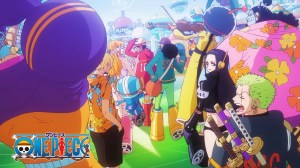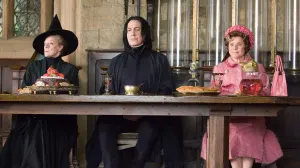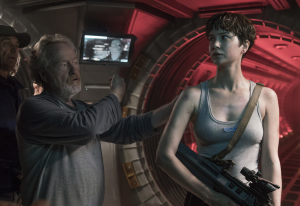One Piece manga fans have peculiar opinions about the anime adaptation. The anime adaptation is faithful to the source material, but because the anime is running nearly concurrently with the manga, One Piece has to pad out some scenes. This gave the anime the reputation of being excessively slow with its pacing. Add in its daunting episode count, and the One Piece anime is viewed as an overlong series with poor pacing. In fairness, the anime does have awkward pacing issues, with certain scenes from the manga not translating as strongly as fans would want.
Videos by ComicBook.com
Nonetheless, there are moments from the One Piece anime that outshine even the manga itself. The anime has the benefits of a score, voice acting, and animation to convey the story, whereas the manga only has Eiichiro Oda’s drawings and dialogue. While Oda’s artwork is amazing, carries gravitas, and guides the story’s vision, the anime is capable of delivering some impactful moments. While it isn’t common, there are at least ten moments from the One Piece anime that surpass the original manga.
10) Kuma’s Flashback
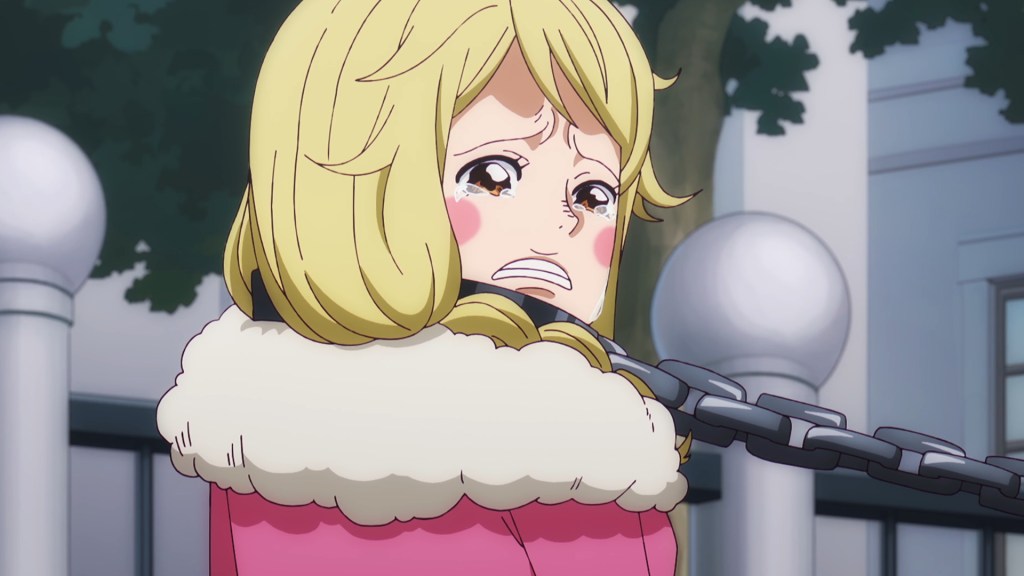
This is likely a divisive placement, as some fans have derided the Kuma’s flashback in the anime for making slight deviations. Most of these deviations include adding more scenes with Kuma and his loved ones, including one final heartbreaking moment with him and his mother.
There’s also a little bit more action and padding that stretches Kuma’s history. Nonetheless, the padding actually enhances Kuma’s story in One Piece’s anime, as viewers get to experience more of Kuma’s life than they do in the manga. Although some of the extra scenes aren’t necessary, they are at least used to build Kuma’s life rather than detracting from it.
9) The Walk to Arlong Park
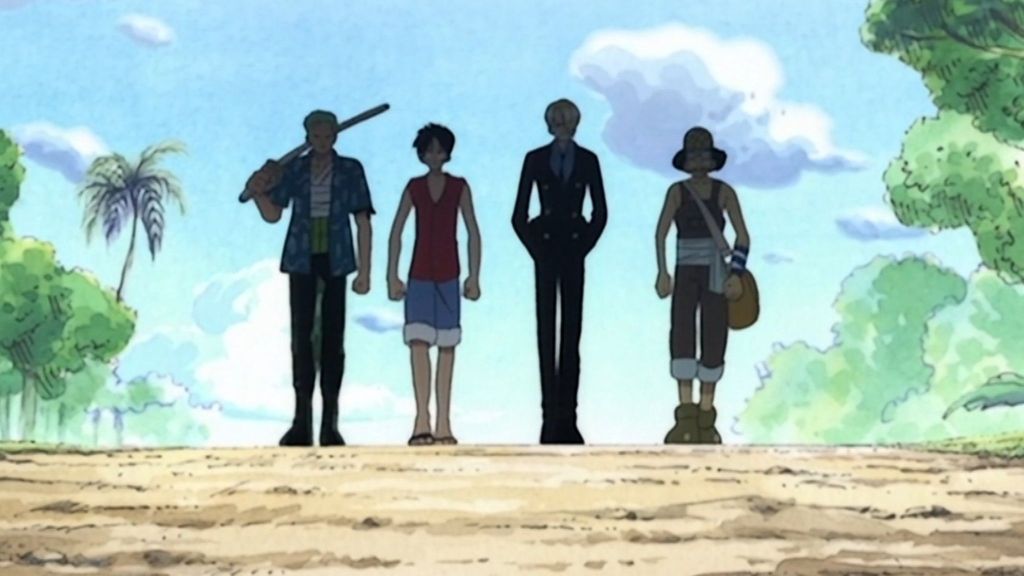
This is a situation where the inclusion of sound adds so much to the scene. Nami’s breakdown, Luffy consoling her by placing his straw hat on her head, and the group walking to Arlong are already powerful images in the manga. But the inclusion of voice acting and the iconic music in the manga enhances what was already present in the manga. The Straw Hats’ walk to Arlong’s Park wouldn’t nearly be as iconic if it weren’t for the soundtrack.
8) The Going Merry’s Funeral
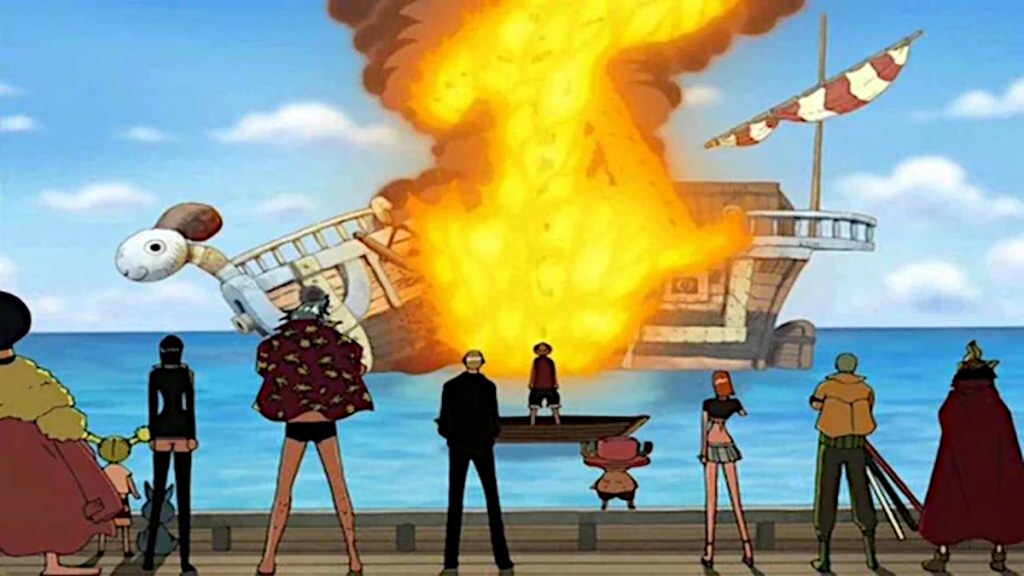
The Going Merry was the original ship the Straw Hat pirates sailed on, and it was almost an additional crew member. Losing the Going Merry was almost like losing a beloved character, and the anime milks the funeral fire scene for all its worth. Such a moment is worth drawing out to let the viewers grieve the loss of a friend, especially with the reveal of the ship’s Klabautermann speaking to the crew in its final days.
The softer atmosphere, sadder music, and dull coloring transform an already somber moment from the manga into a genuinely heartbreaking scene. The voice acting, including the English dub and the original Japanese subtitles, effectively conveys the funeral’s inherent sadness in a way that a manga can’t.
7) Luffy vs. Sanji During the Whole Cake Island Arc
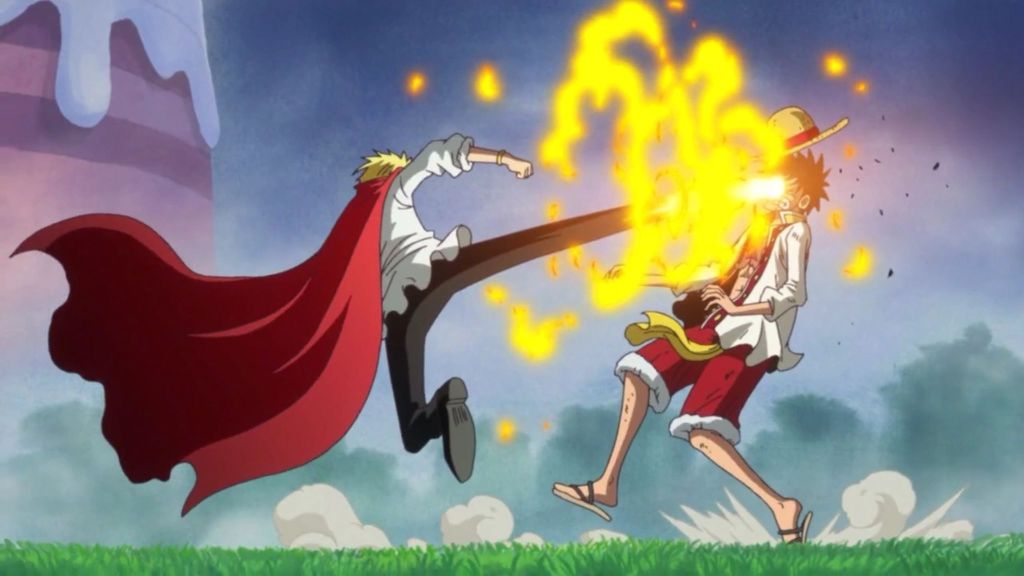
When Sanji left the Straw Hat crew to rejoin his family, the bigger shock was that he was secretly royalty, rather than the simple event of his departure. The manga never properly gave the weight of Sanji’s decision, even when he beats Luffy to a pulp. Readers never believed Sanji would abandon the crew permanently. Credit it to the anime, specifically Luffy’s Japanese voice actress, Mayumi Tanaka, for giving the fight between Luffy and Sanji some legitimate gravitas. Sanji leaving the crew now has real consequences, and Luffy’s pleas would likely go down as one of Tanaka’s finest performances.
6) Gear 5 Luffy
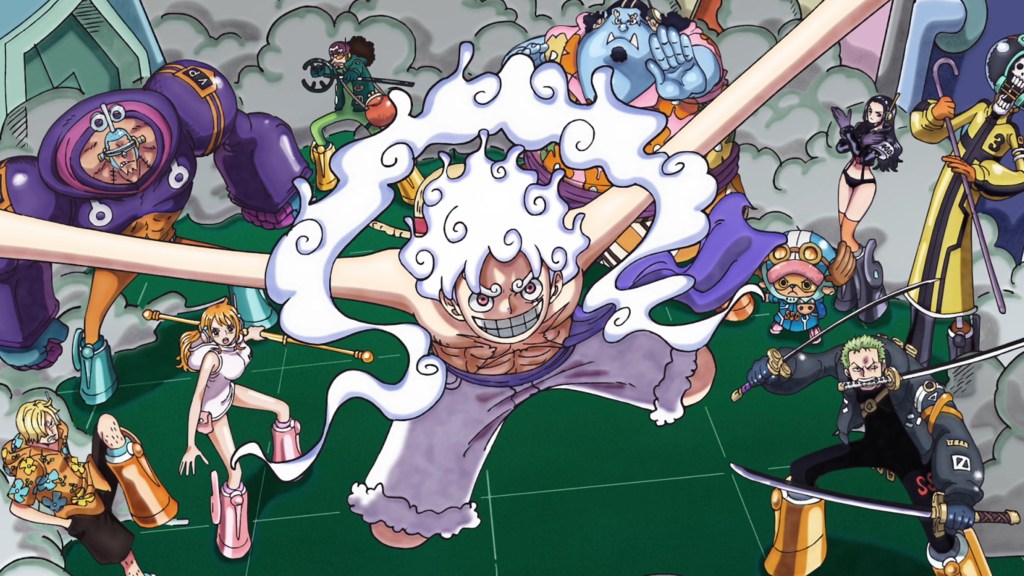
All credit goes to Oda for giving Gear 5 Luffy so much personality and perfectly replicating the old-timey cartoon effects from 1940s Tom and Jerry cartoons. However, Gear 5 was always designed with the One Piece anime in mind. It’s one thing for Oda to create the illusion of motion in his manga; it’s another thing to see it actually animated. Luffy turning the literal floor into rubber, his eyes popping out, and stretching out a piece of the floor to deflect Kaido’s fire blast is so much cooler in animation than in drawing.
5) G-8 Filler Arc
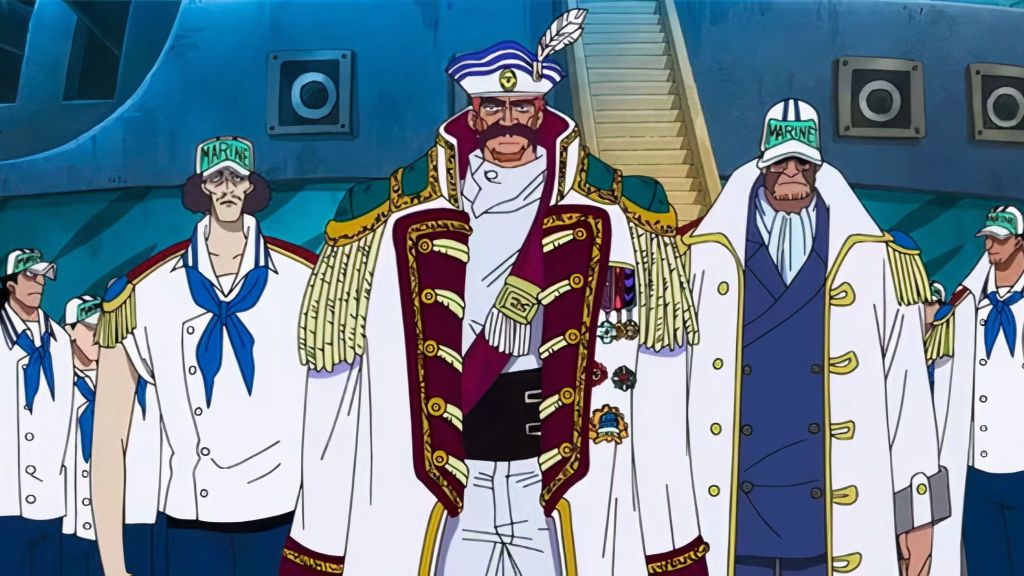
G-8 arc from the anime is one of the more respected filler arcs in any anime. Even diehard manga purists begrudingly respect the arc for not only continuing the story but also developing the characters in a way that makes the next arc feel more organic. This was also one of the few times that Luffy and the Straw Hats couldn’t punch their way out of a situation. The group needed to figure out a way to outsmart the marines and escape safely with their ship. It’s a cat-and-mouse story that also greatly humanized the Marines during a time when they were primarily villainous.
4) One Piece Episode 1015
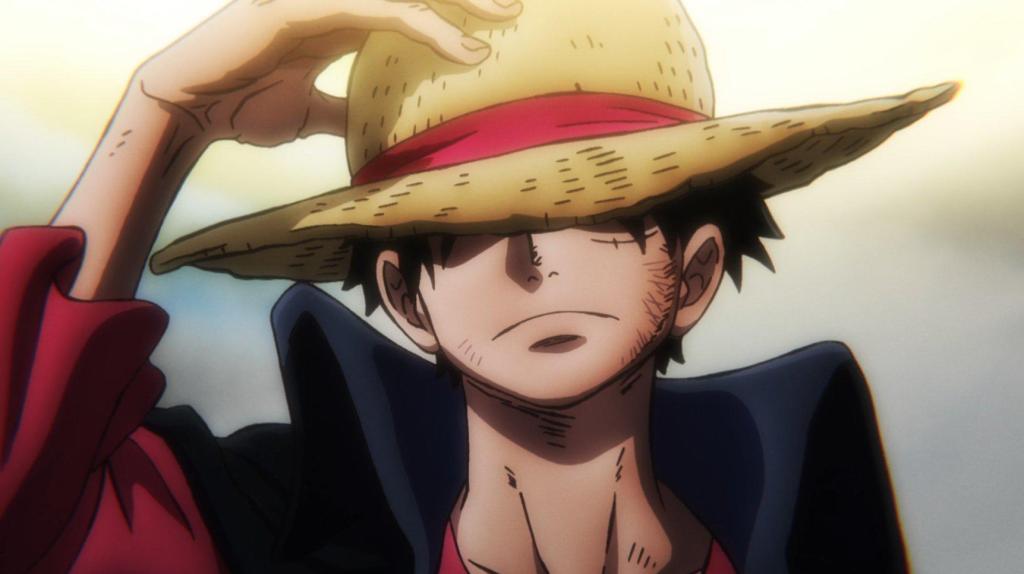
One Piece Episode 1015 adapted the manga’s incredible 1000th chapter, which includes Luffy delivering his biggest punch to Kaido during the Wano Arc. For the momentous occasion, the anime crew went all out, presenting an episode that was not like any other.
From the lightning to the animation, the episode delivered the goods, with Luffy’s iconic declaration of becoming the King of the Pirates sending shivers down fans’ spines. Episode 1015 reinvigorated viewers’ interest in the Wano arc, setting the stage for the Luffy and Kaido rematch that would carry the rest of the arc. What would follow cemented for fans just how incredibly potent One Piece’s anime has become as a visual enhancement on the manga in every sense.
3) Luffy’s Final Punch To Crocodile

Crocodile is the first antagonist that truly pushed Luffy and the Strawhats to the breaking point. He remains a fan-favorite villain and is one of the few bad guys to defeat Luffy multiple times. When Luffy finally defeats Crocodile with a series of punches, sending him up through the floor of the underground ruins, Antonín Dvořák’s “Symphony No. 9,” also known as the “New World Symphony,” begins playing.
It’s a little jarring at first to hear classical music begin playing in One Piece, but the music adds a grandeur and artistry to the moment that was not presented in the manga. It could’ve come off pretentious and unnecessary, yet the moment is earned by how hard Luffy fought to overcome Crocodile. The track makes the anime sophisticated, with “New World Symphony” potentially having multiple meanings. It’s an iconic moment for the One Piece anime and is worth watching for any fan of the brand.
2) Luffy Punches A Celestial Dragon
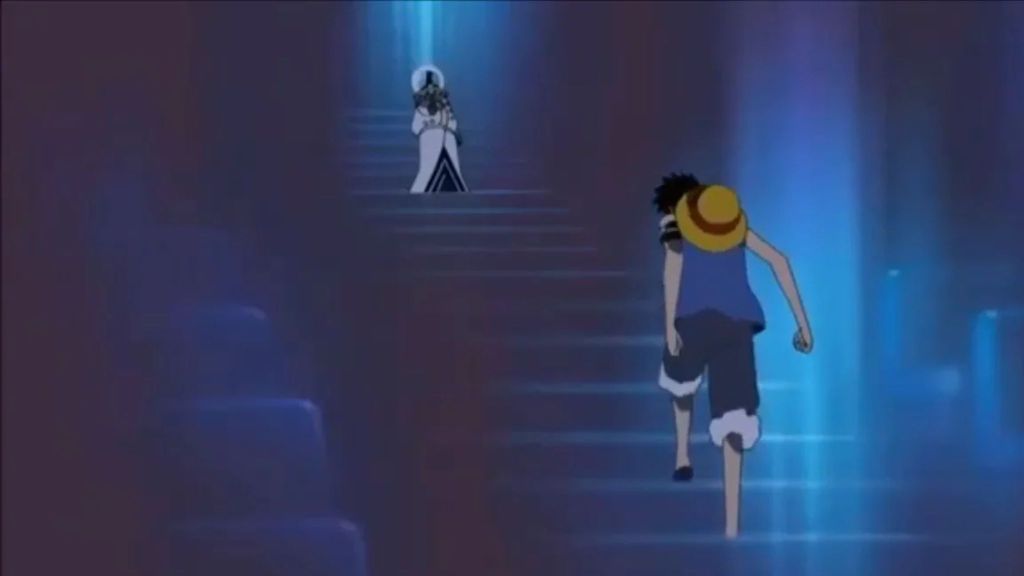
The moment when Luffy punches a Celestial Dragon, the untouchable noblemen who run the world, is satisfying in both the manga and anime. Oda includes plenty of detail in the manga, showing Luffy indenting Saint Charlos’ face. However, the anime elevates the material with a simple yet powerful decision to make the scene go black-and-white as soon as Luffy makes contact with Charlos’ face. The lack of color gives more weight to Luffy’s punch, almost as if he is punching the color out of the area.
Saint Charlos was also a highly despicable person. He was allowed to keep slaves, steal people away from their families, and be unpleasant. No one could touch him, or else the might of the Marines would arrive to aid the Celestial Dragon. Luffy knew this, but still punched him anyway. It was a cathartic moment for the audience and remains one of the most cherished scenes for fans.
1) Zoro’s Backstory
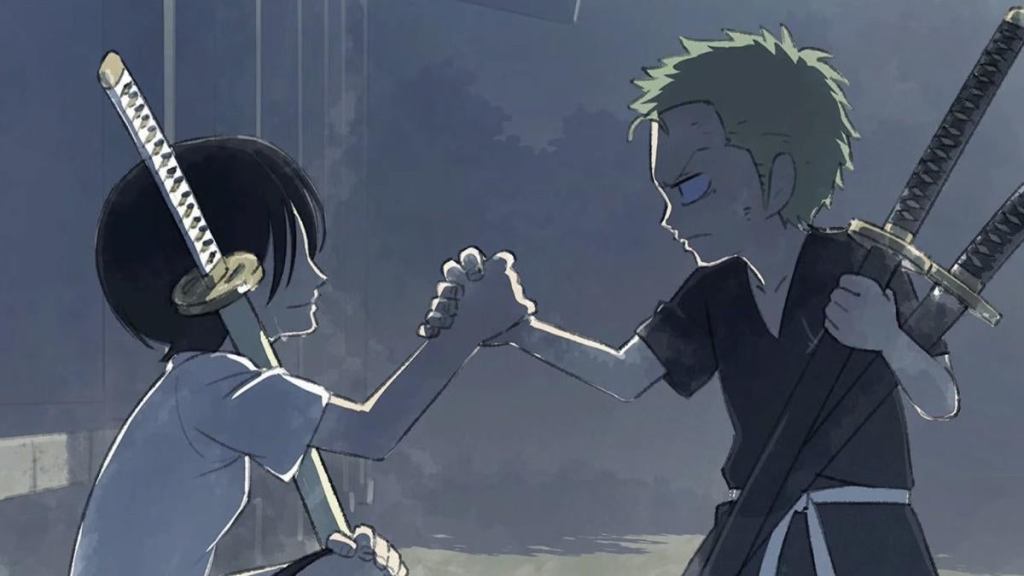
The early parts of the One Piece anime were allowed to take more liberties with the source material. The brand had yet to establish itself as the global powerhouse it would become, nor did anyone involved know how long the manga would run. One of these early liberties was rearranging the order of events for Luffy’s and Zoro’s backstory, pushing Zoro’s origins before the Baratie Arc. Whereas Zoro’s backstory was an efficient couple of pages in the manga, the anime chose to extend the flashback into a full episode.
While the modern One Piece anime would fill out an episode with unnecessary padding, anime creators decided to expand certain things about Zoro’s life that benefited the story. We got to see more of Zoro in his childhood village and learn more about the motivations of Zoro’s childhood friend, Kuina. Spending so much time in Zoro’s life allows audiences to be swept into the story, with the inevitable tragedy hitting that much harder. It remains not only the pinnacle of early One Piece, but also for the franchise as a whole.

